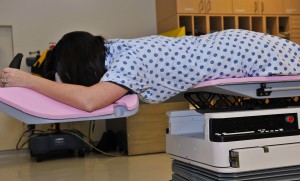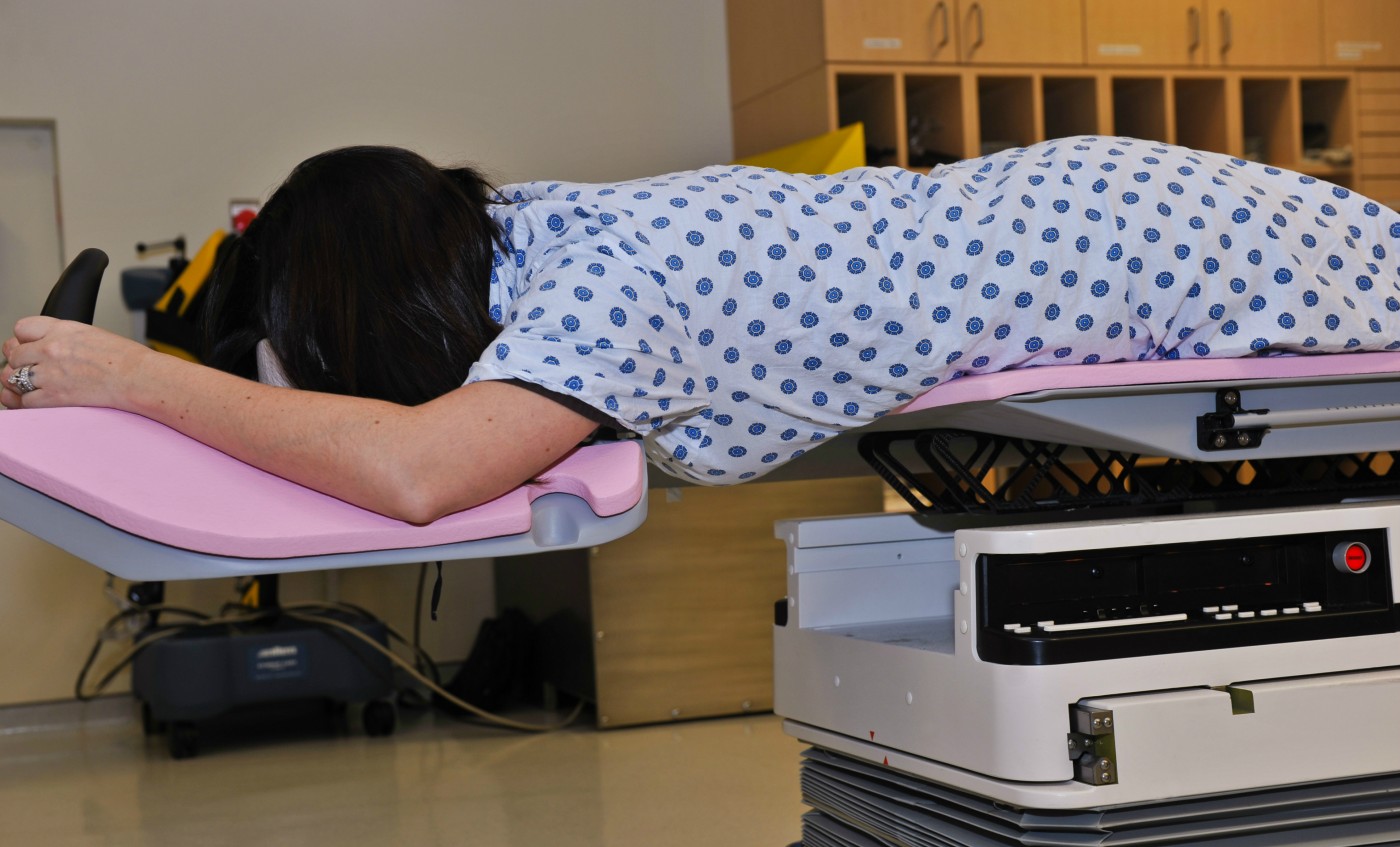
Body position while going through breast cancer radiation treatment matters, says The Ohio State University Comprehensive Cancer Center – Arthur G. James Cancer Hospital and Richard J. Solove Research Institute.
Prone position seems to be the more indicated body position to go through the treatments, Dr. Julia White, director of Breast Radiation Oncology at the Stefanie Spielman Comprehensive Breast Center said in a OSU press release.
Traditionally, to preform breast cancer radiation therapies, women lie on their backs in the supine position. This approach is, undoubtedly, very effective, however there is a slight chance that radiation can damage healthy lung and heart tissue.
Recent studies show that this new approach reduces the amount of lung and heart tissue affected by radiation therapy by 90 percent. With the new modified treatment board, developed with Qfix, an innovative medical device company focused on developing technology-driven solutions for radiotherapy patient positioning, patients can lie comfortably on their stomachs, while the breast tissue falls away from the chest wall and radiation can still target the cancer. “The prone board allows gravity to pull the breast away from the chest wall, and create a more uniform shape that we can distribute the dose of radiation through evenly,” explains Dr. White in the press release.
Each patient uses a vac bag or a been bag costumized to their shape to immobilize their arms during the procedure. The new modified board can be extended off the treatment table so the radiation beam can make a full rotation around the patient.
[adrotate group=”1″]
Beyond the advantages related with the preservation of lung and heart tissues, this new approach improves cosmetic outcomes. In traditional radiation therapy, the shape of the affected breast was closely related with long-term problems and successful cosmetic outcomes were found in 60 to 70 percent of the cases. With the new modified board, 8o to 90 percent of successful cosmetic outcomes are being delivered to women suffering with breast cancer and going through radiation.
Kim Doran of New Albany, OH, who has a family history of heart disease, was highly concerned about radiation therapy: “Both my parents passed away from heart attacks. So, having that history of heart disease, my main concern was the radiation affecting my heart,” Doran said in the press release. She also explained that this new approach made her feel much better once it really responds to her health needs.
Dr. Julia White says that women who take advantage of this approach are those who caught their breast cancer early, who’ve opted to have a lumpectomy and hope to preserve as much of the breast tissue and shape of the original breast as possible.
– See more at: http://www.cancer.osu.edu/mediaroom/releases/Pages/EXPERTS-SAY-BODY-POSITION-IN-BREAST-CANCER-RADIATION-TREATMENT-MATTERS-1.aspx#sthash.nz9neJ9x.dpuf


